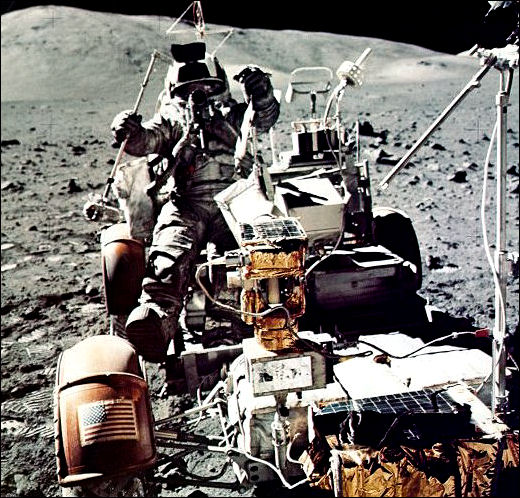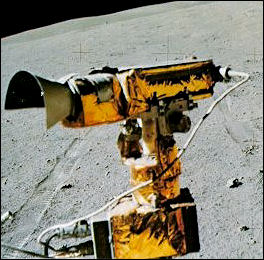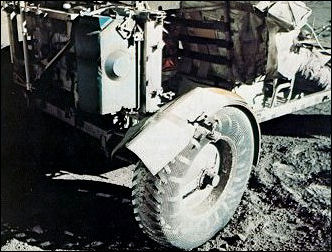
|
| Mounting the Rover when spacesuited takes a bit of doing. You stand facing forward by the side of the vehicle, jump upward about two feet with a simultaneous sideways push, kick your feet out ahaed, and wait as you slowly settle into the seat, ideally in the correct one. Here I'm completimg the job. |




